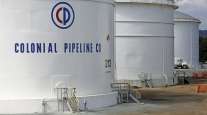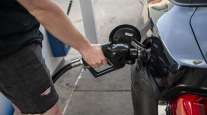Drivers Won't Pay Much More at Pump This Summer

American drivers paying the most for gasoline since 2015 can take some comfort from forecasts that prices don’t have much further to rise.
Regular gasoline averaged $2.42 a gallon April 10, according to the Energy Information Administration. While prices are 35 cents higher than a year ago, they’re just 4 cents below what the agency sees fuel averaging all summer.
RELATED: Diesel rises 2.6¢ to $2.582 a gallon
"Oil prices have been relatively range bound, and it’s been a quiet maintenance season, so it’s been quiet at the pump," said Patrick DeHaan, senior petroleum analyst for GasBuddy. Prices will only become volatile if "something large disrupts the flow of oil somewhere, and oil prices and thus gas prices rise proportionally," he said.
EIA in its Summer Fuels Outlook sees prices averaging 23 cents higher this summer compared with last year, primarily due to Brent crude oil being $8 a barrel higher than in 2016.
The higher prices may keep a lid on demand. This summer, gasoline consumption is expected to increase just 24,000 barrels a day above last year’s record, 80% smaller than 2016’s surge.
"Last year, Americans were taking the road trips they had delayed during the era of higher prices," DeHaan said. "There is lower demand this year because of the pent-up demand we saw last year."
Higher retail gasoline prices could be contributing to flattening demand, too, DeHaan said. "Demand is purely price-based, and higher anticipated prices will likely lead to gasoline demand that is lower than last year or basically flat."
Supply is likely to increase as refiners return from seasonal maintenance. Over the past five years, refiners nationwide have increased the amount of crude and other feedstocks they processed by an average of 1 million barrels a day from April through July.
"Usually, gas prices between mid-February and Memorial Day increase somewhere from 25 cents to 70 cents," DeHaan said. "But this year, we may not even see a point where gas prices get up to a 35-cent increase because utilization is already looking good and most refinery maintenance has peaked, so that is good news for motorists."




